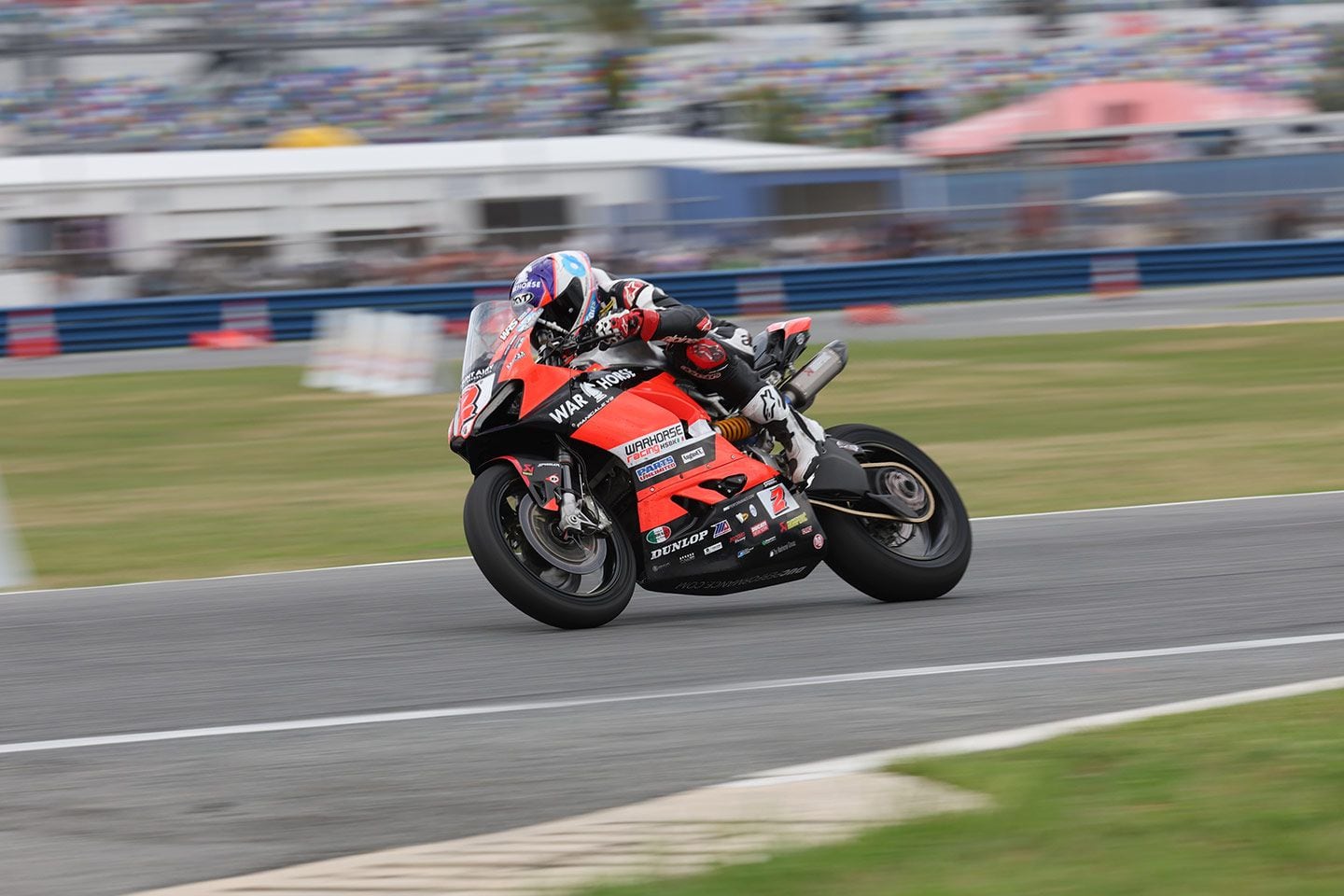
Like Mount Everest, Daytona gets our attention “because it’s there.” A lot has changed since the early days, but the Daytona 200-mile motorcycle roadrace carries on.
Last Saturday’s win by Josh Herrin on a Warhorse Panigale 955 Ducati was not really a surprise, but his achievement of a third 200 win establishes him as one of the distinguished multitime winners who know how to stay durably fast on this track through a long afternoon. He also showed the truth of what Kurtis Roberts told us in the entryway of the old Benny Kahn press room years ago: All those miles aren’t racing so much as they are a time for surviving and planning. The real race may be decided in the final two laps, when the rider with the best understanding of the dynamics behind drafting is the first to cross the finish line. Herrin’s win was without drama in the final lap.
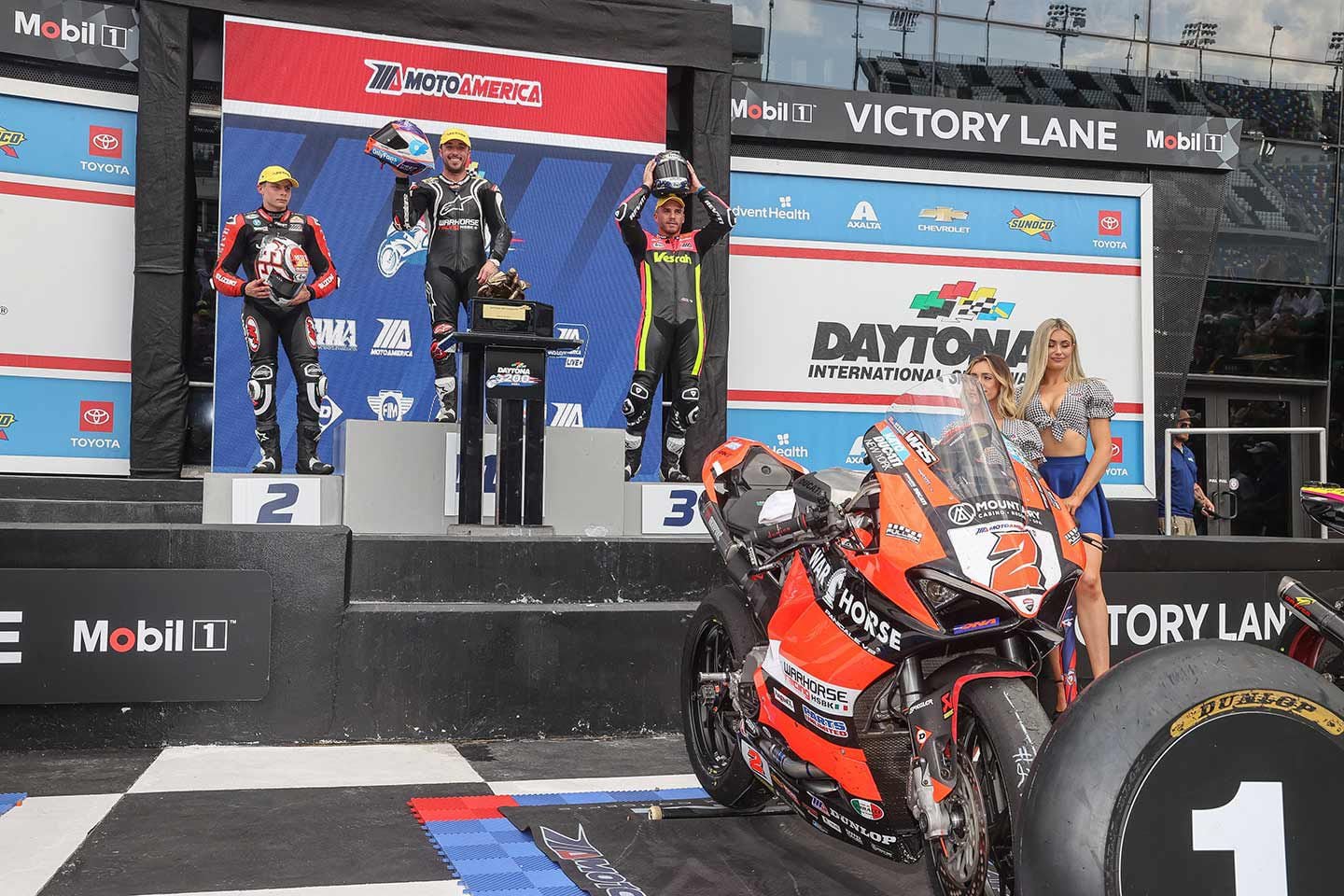
Scott Russell is a five-time winner of the 200. I asked him a few years ago what is important to survive and succeed in this race. His words were roughly: “When you come off a corner, you want to open up, accelerate hard, spin the tire. At Daytona you can’t. You have to control yourself and think of the tire.”
Another essential Daytona skill is getting past the clumps of lappers—not being held up, not using any of your nine lives. Miguel DuHamel was so angry that he could barely contain his anger when he almost died because of an erratic rider. Honda personnel were attempting to prevent him from saying something they would regret. He explained clearly: “The slow rider has the extra grip to make sudden moves. The fast rider is using all his grip to go fast, so he’s committed to his line.”
The race is long and the track is “not especially smooth.” You see the bikes’ suspension working all the time, and riders are constantly jolted. It’s physical.
Pit Stops
Each team aims to perform two professional, routine gas and tire changes. MotoAmerica pit reporter Hannah Lopa had it right when she said a successful stop calls for “…not so much physical speed but precision. The crew must be smooth and deliberate.”
In the improvised pre-race “pit-stop contest” with $7,500 to win, I saw what happens so often on race day: fumbles from trying too hard. In one case, the rear axle wasn’t tight and in the other, the team began to push before the air wrench was off the axle. Both were DQ’d. In the race, Herrin’s team did the work professionally.
Fuel Management
Fuel management requires that someone in each team be an expert soloist with a hand-held calculator. How many miles do we get through practice? The maximum tank capacity is 19 liters or 5 US gallons. When Richie Escalante (M4 Suzuki GSX-R750), running second, ran out of gas during his final lap he did what we’ve all done when a bike has cut out: tried leaning and sloshing, hoping to push remote pockets of fuel to the pump inlet. Rider after rider passed him—a bad dream as a sure second became fifth (he was later advanced to fourth). He had previously led the third position by 40 seconds. They refueled, according to rumours, 21 laps before the finish. Did they accurately know the volume of their tanks? Did they know that the tank was filled to 100 percent? Escalante later commented, “I don’t think this place likes me.”
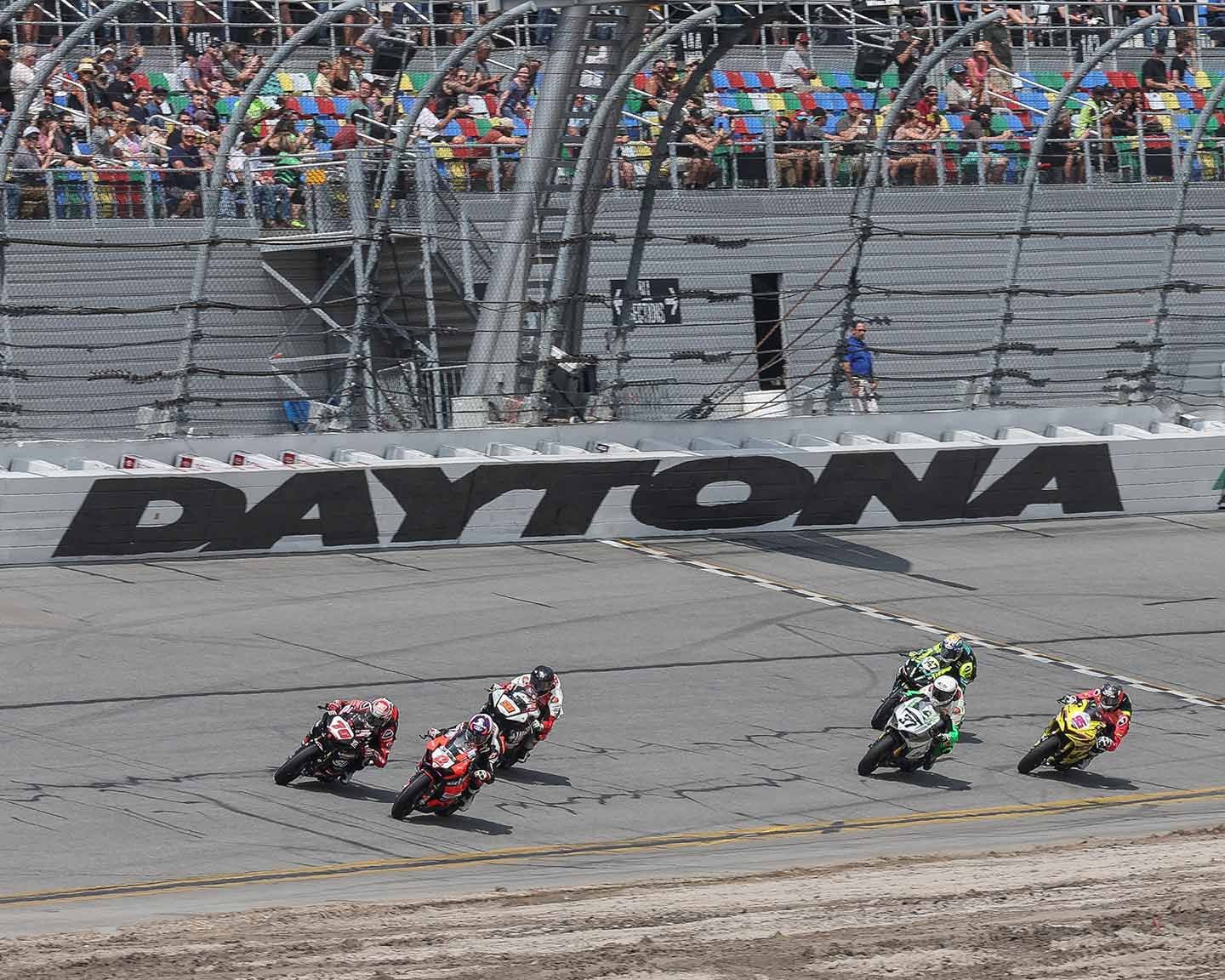
I have seen people take the empty tank to a gas station and “measure it” by filling it from a gas pump. It’s a clever improvisation, but is it good enough? Bobby Fong, who was one of the first leaders, had his fuel tank disqualified due to a slight oversize.
Dick Mann on one occasion suggested that a high-finishing rider who knows his tank may be “a little big” would be excused for expressing his joy by punching the fuel tank (only works on metal tanks, of course).
The graduated 4-liter cylinder is a great way to track your fuel consumption. It also allows you to know the actual tank volume.
Herrin’s engine cut just after entering pit lane on one of his stops, but he was able to reach his crew.
Brandon Paasch of M4 Team Hammer Suzuki led. Then his engine stuttered. He barely made it until his first stop. The fuel can lifted and the dry-break on the can did not fully close. This caused a spray that looked like a large fuel injection nozzle. He was left drenched. We were instructed by the dry-break maker to use lubricated O-rings because the spring may not be able to seal and close the valve in some cases.
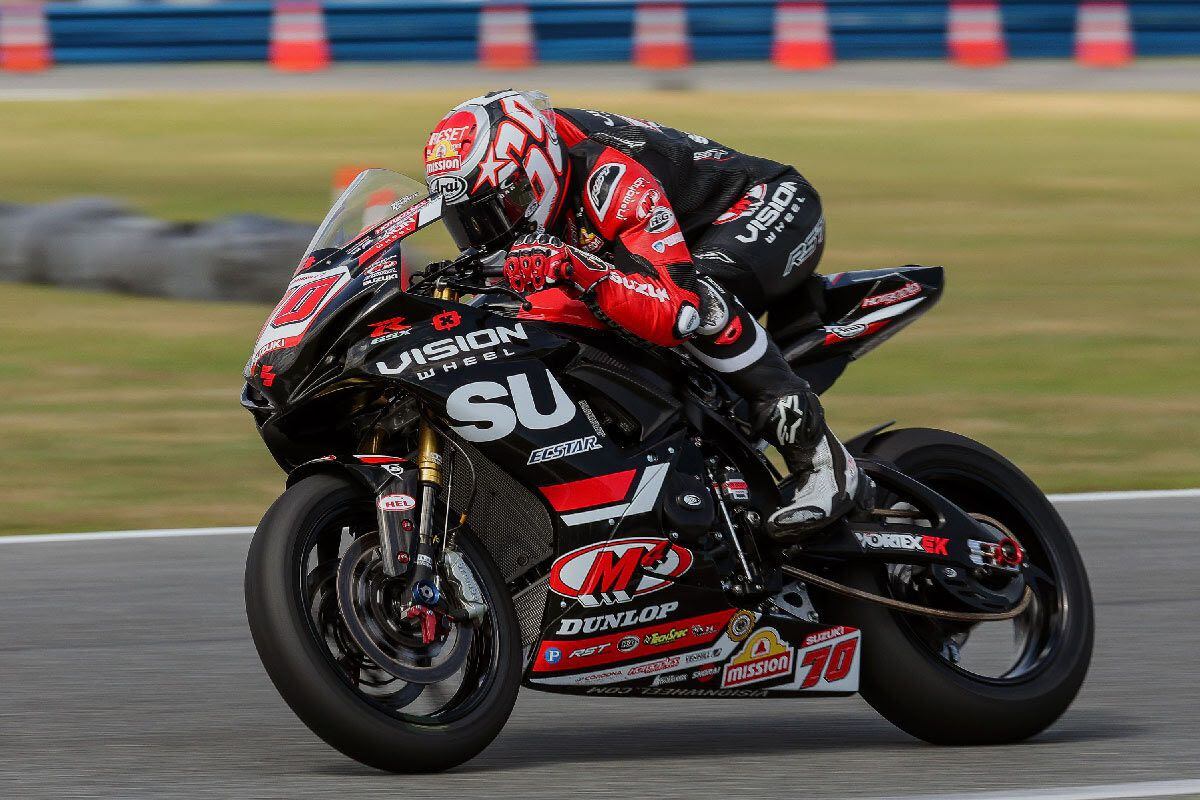
At Daytona, the difference between the best-prepared teams and the rest is magnified: In 1978, when intake restrictors were introduced, Kenny Roberts lapped all the other cars. Near the end of this year’s race, Josh Herrin was lapping ninth place.
Changes over the Years
How has Daytona evolved? For years, there were displacement formulas in place. In the days when Triumph and Harley-Davidson were competing, overhead valve engines had a 500cc displacement while side-valve engine sizes had 750cc. In 1970, the 1968 Competition Congress reset the formula to a straight-750, and racing was international. Triumph, BSA and Harley-Davidson factories were involved. Daytona was the race that every manufacturer wanted to win. Through the two-stroke years (1972–1984) displacement still ruled: Lightweights were 250s, pro bikes were 750s.
Daytona’s driving force in those factory-team days was the hope of pushing product into the world’s greatest market. They tried hard! Dick Mann’s racing knowledge made it possible for Honda to win in 1970 and BSA in the following year. In 1972, when the two-stroke age began, the number Japanese engineers on each team became a yardstick for power. The top crew chief of the time made a joke about two crates that were still unopened in the Yamaha garage. One was stenciled, “Open this one if it won’t run under 2:02,” and the other, “Open this crate if it won’t speed-trap over 190.”
In 1985, the Daytona 200 was created from the four-stroke 750 Superbikes. The supersport class continued the tradition of displacement-limited racing with 600 and 750.
When the class became 750 two-stroke, 1,025cc four-stroke in 1980, Honda for 1982 entered its tire-eating V-4 “FWS,” and riders Mike Baldwin and Freddie Spencer led effortlessly. Honda was prepared with special hardware that allowed for rapid tire changes. Daytona proved too tough for rubber. Tire changes are now a common occurrence for the 200.
In 2009, when it was decided that no bike could exceed 180 mph in Daytona for 2009, the 600 Supersport replaced Superbikes in the 200. That was when Mat Mladin referred to the 600s as “minibikes.”
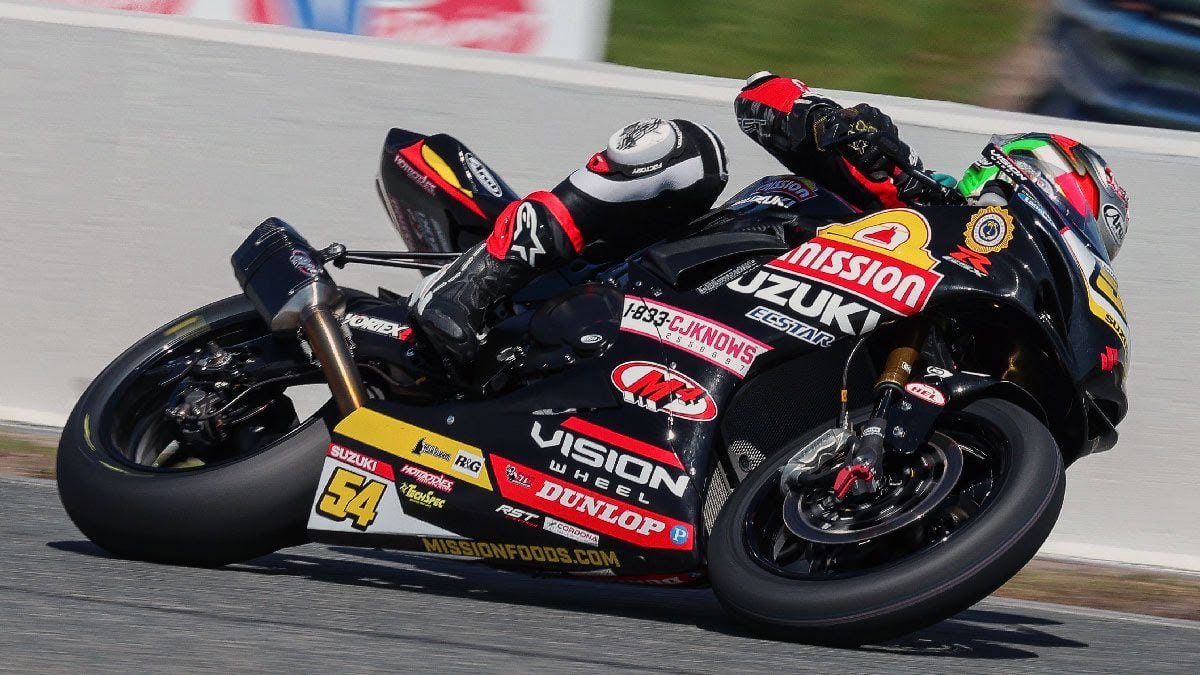
As sportbike sales soared after the 2008 crash, 600s sales plummeted. What will we do when Japan stops producing 600s? A fresh idea emerged: Let’s race bikes of similar lap time, not of identical displacement. This is Supersport Next Generation, which includes Ducati 955 twins and Triumph and MV triples, along with the usual 600s, Kawasaki’s 636s, and Suzuki’s GSX-R750—all subject to periodic performance adjustments.
Superbike remains MotoAmerica’s premier class at all other events.
Present-day Daytona lap times can’t be compared with those of earlier times because the need for more motorhome parking has caused shortenings of the first infield horseshoe. The chicane is also different. Nothing is sacred. Answer: Yes.
Daytona is always a drama: Who will survive the chaos and be at the front of the pack? Or better yet—to do what Herrin did this year—to run a sustainable pace, keeping the tires sweet, that carries the winning rider out of reach.
2024 Daytona 200 Results
- Josh Herrin (Ducati)
- Tyler Scott (Suzuki)
- Hayden Gillim (Suzuki)
- Richie Escalante (Suzuki)
- Karel Hanika (Yamaha)
